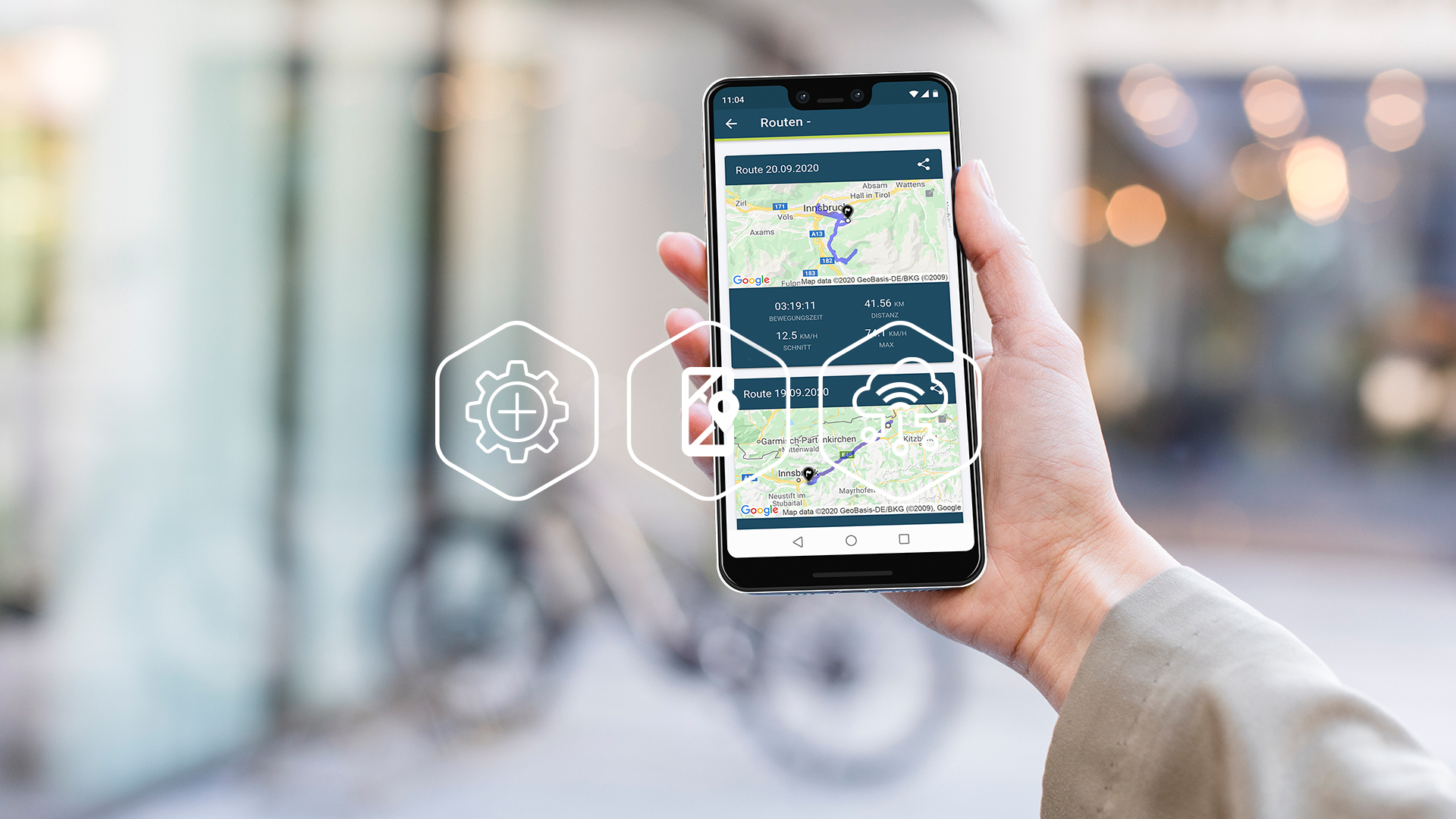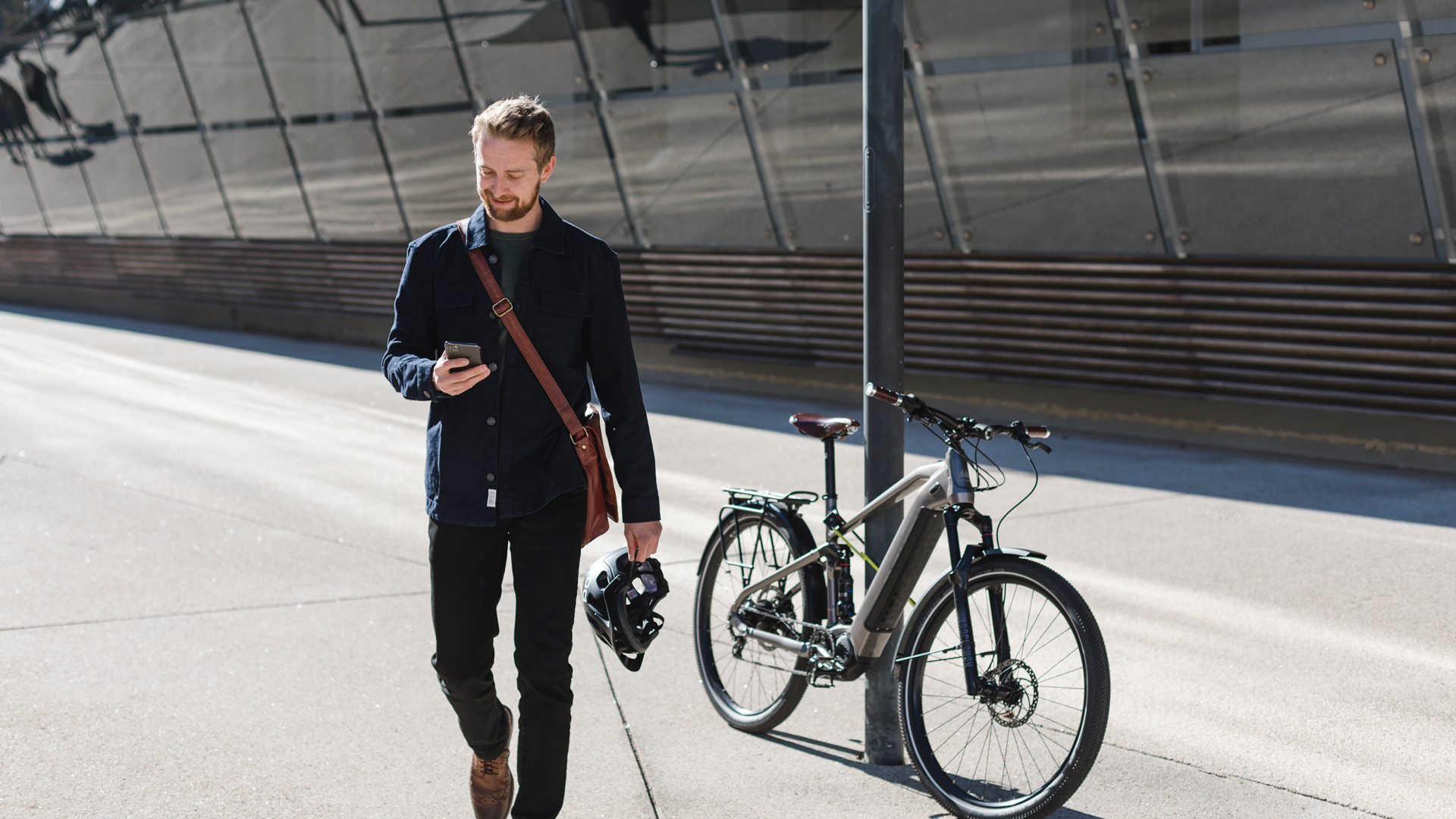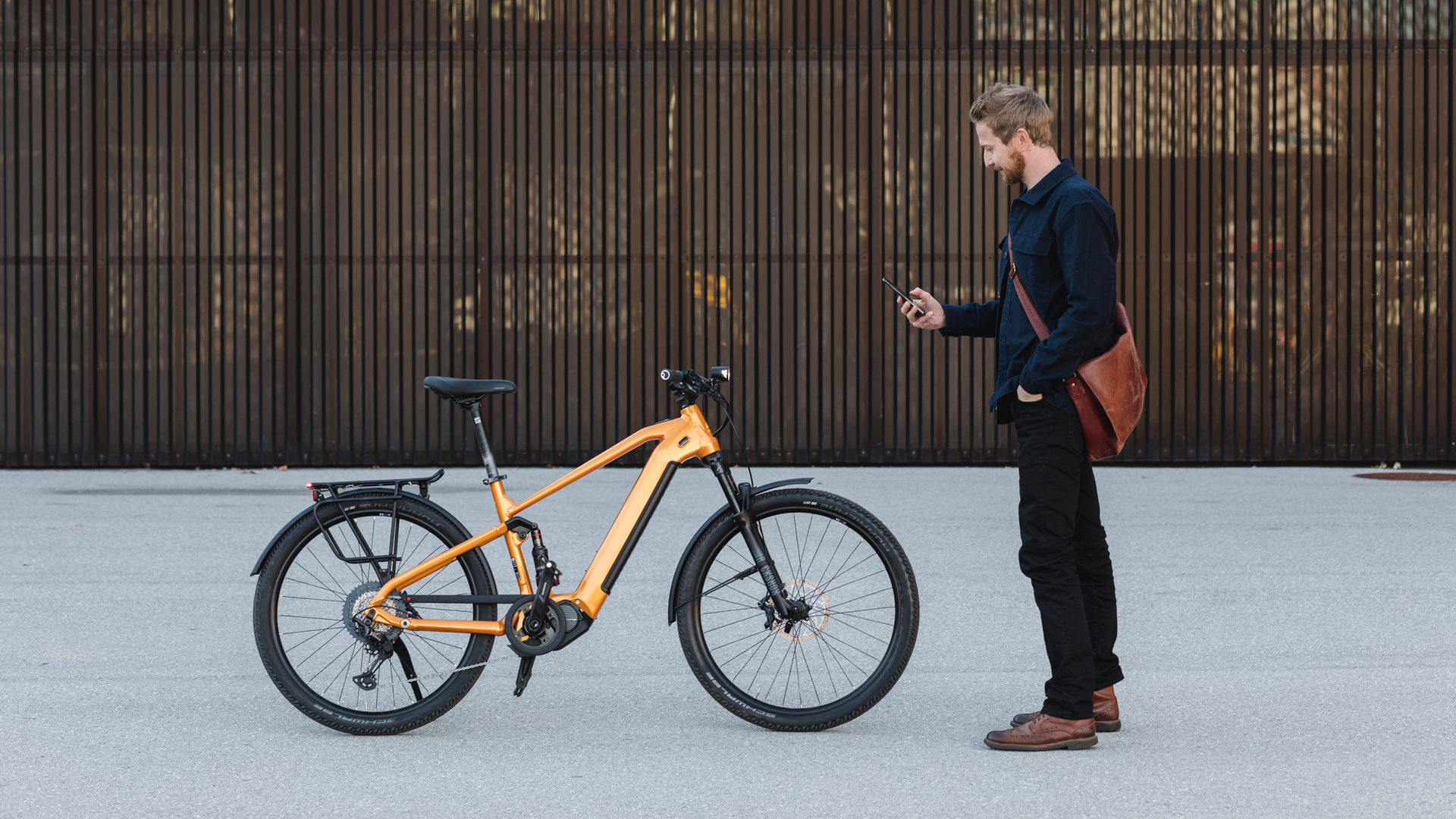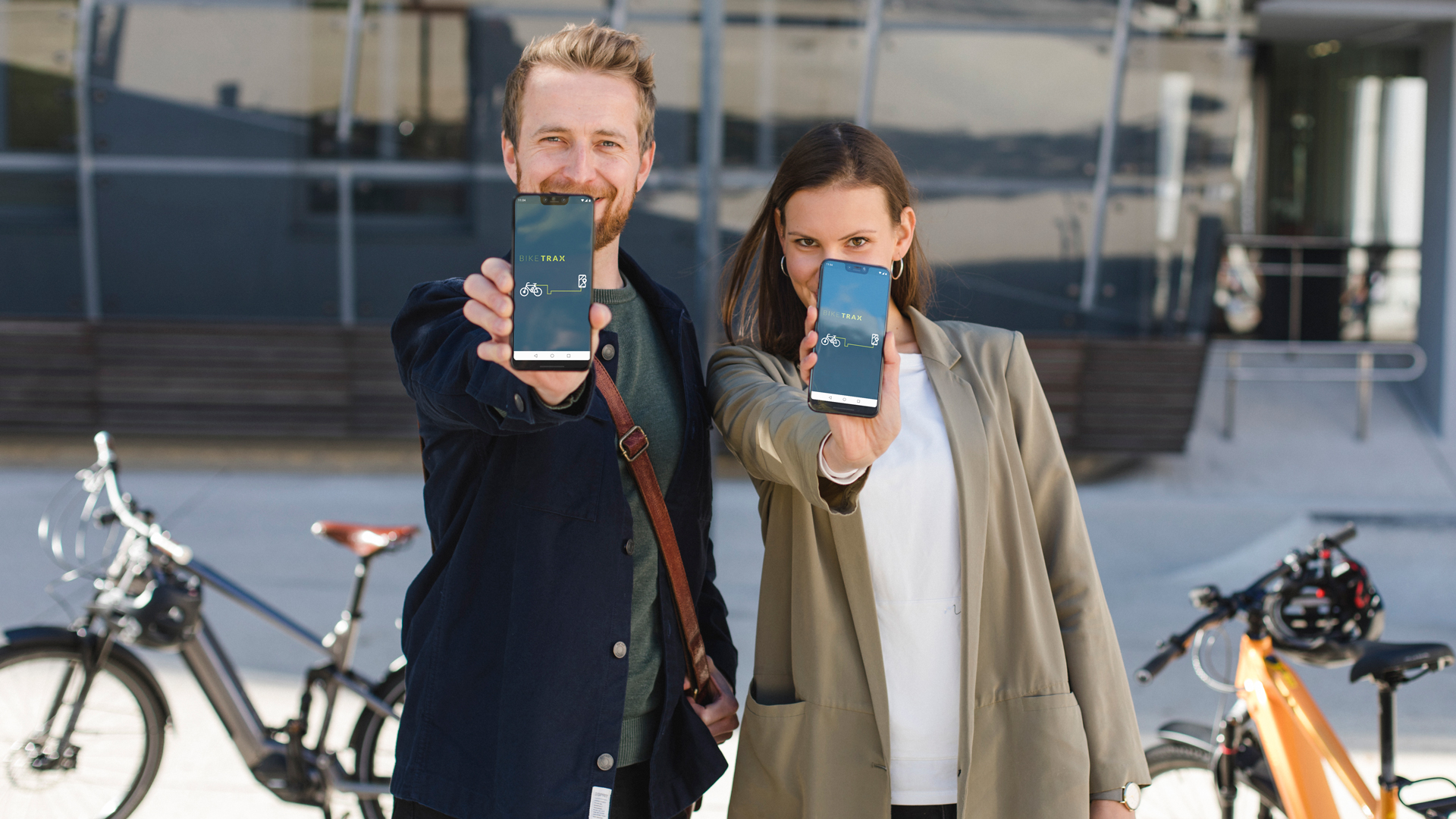- Free shipping from 220€The order of accessories (without BikeTrax) is excluded from the free shipping costs.
For manufacturers, PowUnity explains, Top, Topics
E-bike app developer: hire in-house or outsource? Neither!
Inhalt
About e-bike apps developer in a nutshell:
- Components of an e-bike such as sensors, the motor or a digital lock can be connected digitally to each other, to a smartphone or to a central hub. In this context, one speaks of “eBike connectivity”. New products and services can be developed on this basis.
- E-bike manufacturers are launching their own app to bring these services together and establish direct customer contact.
- In-house development of an app has the advantage that the development process takes place in-house, but the team building is associated with great effort, as good developers are rare.
- The development of an e-bike app with an external team brings a time advantage, but is associated with high costs. The development of the app is an ongoing process.
- PowUnity develops a white-label app e-bike app solution together with e-bike manufacturers. The development time of the app is short because the foundation, our PowUnity app, is the perfect basis for a manufacturer software solution. For e-bike manufacturers, there are no continuous development costs that are difficult to plan.
Sooner or later, the classic e-bike display will be obsolete. Instead, the smartphone will become the control centre for pedelecs. And the right mobile apps will play a key role in this. In our overview article on e-bike apps, we looked at what distinguishes good e-bike mobile apps and what advantages they bring for e-bike owners. This time, we will look at the topic from a different perspective.
The development towards connected e-bikes holds enormous potential for e-bike manufacturers as well. By offering customers engaging digital experiences, they increase the attractiveness of their e-bikes. In addition to that, new earning opportunities arise, especially through their own apps. And this brings us to the central question that many e-bike manufacturers are grappling with: Is it better to develop e-bike apps in-house or to leave it to others? And where can a suitable app developer be found?
In this article, you can also learn more about successful app developers and why you might have already found the perfect solution for your company.
eBike Connectivity means direct contact with customers
You may be wondering why we are writing this article to educate you on what you need in order to develop the best e-bike app.
At PowUnity, we have been dealing with the topic of e-bike connectivity and apps for years. We started out in the B2C sector and thanks to our GPS theft protection for e-bikes, we have made e-bikers forget their biggest fear – the fear of a bike theft. Together with the PowUnity app, our GPS tracker is now one of the leading solutions for theft protection in the e-bike sector.
Today, fleet operators and e-bike manufacturers also receive advanced systems from us, consisting of hardware- and app-development. But the B2C customer, the e-biker, is still “on the phone with us” every day. We work closely with e-bike manufacturers and pass our key learnings and experiences from direct 1:1 customer contact on to them – in order to turn more people into satisfied e-bikers.
We are happy to share this expertise with you below.
Central concepts and their meaning for connected e-bikes
In order for e-bike mobile apps to “play to their strengths”, several prerequisites must be met. In this context, the following terms and necessary features are crucial.
Digitalisation
In our case, digitalisation means that digital components are added to an analogue product or service. Ideally, this process significantly improves the product or service.
IoT
IoT is the abbreviation for “Internet of Things”. This refers to the networking of physical objects with and via the internet. When we talk about e-bike IoT, we are primarily talking about the connection of e-bikes to the internet.
Connectivity
Components of an e-bike such as sensors, the motor or a digital frame lock can be connected digitally to each other, to a smartphone or to a central hub. In this context, we speak of “eBike connectivity”.
When it comes to a smart e-bike, the processes mentioned above work together:
- First, components such as locks, motors or sensors are digitised.
- Then these components are connected to each other and to a hub or smartphone.
- Lastly, connection of the digital environment with the internet is created.
On this basis, new products and services can be developed that significantly increase the value of e-bikes. Developing a mobile app and connecting it to an e-bike (e.g. via the use of a QR code) is only one part of a comprehensive digitalisation process, but a very important one. Because with nothing more than a mobile app, the manufacturer is able to establish a direct connection to the customer, since all services converge here.
Info: You can find out which services an e-bike app should offer and which services should also be included in the e-bike app development, in our article “How to find the best e-bike app for your needs”.
Important note: We use the terms “connected e-bike strategy”, “e-bike IoT strategy” and “e-bike digitalisation” interchangeably on our site because only few readers are aware of the subtle differences.
Why a good e-bike app is so important for manufacturers
Mobile apps for e-bike owners primarily cover the following features:
- Theft protection and insurance
- E-bike maintenance and servicing
- Fitness tracking
- Navigation and ride statistics (incl. trip details)
- Settings for the e-bike itself
- E-bike display
- Community features (incl. additional services such as payment gateway integration or e-wallets cloud environment)
These functions bring different central advantages:
- 1. and 2. provide a sense of security. They thus help to reduce hurdles that stand in the way of buying an e-bike.
- The remaining features primarily increase the motivation to use the e-bike.
The central purpose of e-bike apps is, therefore, to reduce fears or hurdles and to motivate people to ride more. Both increase the willingness to buy an e-bike and to use it instead of getting into the car.
An additional advantage: manufacturers can establish direct contact with their customers through their own app. This is not otherwise the case in the usual supply chain of manufacturer > distributor > dealer > customer.
More and more manufacturers are recognising the potential of mobile apps and are making efforts to exploit it. The start-up Cowboy Bike, for example, is doing a good job. The topics of “connectivity” and “apps” play a prominent role in the presentation of its e-bikes.
Important note: Whether an e-bike app fulfils its potential depends crucially on good development. Otherwise it can backfire. And then the app might have a negative impact on the riding experience and on sales.
A comparison from the automotive industry shows how crucial a functioning e-bike app strategy is: the Cupra Born e-car scores points with an excellent driving experience and attractive design. But a cumbersome operation and an unhappily designed display have a deterrent effect on many prospective customers.
Developing an e-bike app – advantages and disadvantages of different methods
As an e-bike manufacturer, doing without a mobile app is not a good idea. But what is the best way to develop your app idea?
You can find the advantages and disadvantages of different strategies below:
1. Build an in-house app development team
Doing everything yourself is an option that seems obvious at first. After all, this way companies have full control.
Unfortunately, building a good team of developers for a mobile application (e.g. for an e-bike sharing business, bike rental software or even scooter sharing app for electric scooters) involves a lot of effort. This is because software development is not usually in the DNA of a bike manufacturer and outstanding software developers are quite hard to find. It often takes years to put together a promising team. And if the team then starts from scratch, your company will be likely lagging behind the competition that might be almost impossible to catch up on.
⊕
- Your company has full control.
- The development process takes place in-house.
⊖
- Good developers are rare.
- Building a team takes a long time and involves a lot of effort.
- Other methods lead to success faster.
2. App development by an external team
And what about outsourcing? In this case, there is no need for the time-consuming team build-up. The catch: unlike the development of a bike, app development is an ongoing process that is never really finished. Whether communication protocols, operating systems or programming languages, technology is constantly changing.
Since agencies for app development do not usually think in the long-term, but charge by the hour, high costs are incurred on a permanent basis. And this does not mean that the mobile application is worth such investment.
⊕
- No time-consuming team build-up is necessary.
- Agencies provide the necessary know-how.
⊖
- Continuous further development results in permanent high costs.
- The development partner is primarily interested in earning money in the short-term.
3. Do nothing and promote the apps of others
Finally, companies can wait and see or promote the apps of motor suppliers like Bosch. This method does not initially incur any costs. Depending on how good the app of the motor manufacturer is, customers might be also satisfied.
However, companies then leave direct communication with customers to motor manufacturers who gain a knowledge advantage and the dependence of the companies increases. Moreover, individualisation options are eliminated. In the worst case, the motor manufacturer eventually turns away or launches its own e-bike brand. Although tempting for a short time, this strategy is risky in the long run.
⊕
- The effort is low.
- The costs are low.
⊖
- Manufacturers develop a high dependence on others.
- The knowledge gap with the competition grows.
4. White-label app from PowUnity
Are you looking for an alternative to the above methods for your company? One that doesn’t require you to invest a lot of money and effort in building up a team, and offers short development times as well as a good price-performance ratio?
Then we recommend a white-label app solution from PowUnity.
With PowUnity, no app platform product is developed, given to the customer and then simply invoiced. E-bike manufacturers are our partners. We do not only develop an app for you that is continuously updated at no additional cost. But we also work together to develop a joint business model from which we will benefit as partners now and in the future.
⊕
- The development time for your e-bike app is short because the foundation, our PowUnity app, is the perfect basis for your software solution.
- Development is at a constantly high level because our own earnings depend on it.
- There are no continuous development costs for your company that would be difficult to plan.
Important note: A white-label solution from PowUnity is based on the PowUnity BikeTrax app, but is individually adapted to your needs or the service wishes of your customers in selected areas. This means that you receive proven quality in a customised version.
Well-known e-bike app developers and what sets them apart
There are only a few well-known developers of e-bike apps. After all, this is a relatively new discipline.
Nevertheless, we would like to mention a few examples.
Bosch
Bosch has not only made a name for itself as a manufacturer of e-bike drives. The company also convinces as an app developer. But what plays a role here is that Bosch bought the start-up Cobi in 2018, which had focused on the development of e-bike apps. In this way, the company acquired valuable know-how in addition to its existing expertise.
Speaking of know-how, Bosch has a lot of it anyway. After all, it is a large corporation that is known for its technical expertise. There is no lack of financial resources either.
However, Bosch is a pure “product supplier” that focuses on its own success. Manufacturers have to do without app customisation options and a joint digital project or business model. They do get a ready-made app, but nothing more.
Rimac Automobili
The young Croatian Mate Rimac is the founder of the car manufacturer Rimac Automobili. He also launched the e-bike brand Greyp.
Greyp bikes are equipped with a comprehensive bike app as standard. You can tell that the company thinks and acts in an innovative way. However, only its own brand benefits from this as Greyp does not offer app development for others.
Paolo Dozio
Independent app developer Paolo Dozio developed the BLEvo app for Specialized Levo e-bikes. The motto: “Transform your (Specialized) Levo into a Smart Levo”.
Sounds ambitious, but the BLEvo app delivers on the promise, as Dozio knows exactly how to address customer pain points. The app even scores significantly better in reviews than the Specialized Mission Control app from the manufacturer itself.
However, the software does not have the nicest UI/UX design – and that makes it difficult for the customer to use the app. This shows how important it is to know and correctly understand the app users, to develop an e-bike app together with the customer and not to ignore the market.
PowUnity
Sometimes a little self-praise is allowed. After all, PowUnity with its GPS tracking system has a successful connected e-bike product on the market. In addition, we are currently developing a new PowUnity e-bike app in direct customer contact, which will be tailored to the needs of our BikeTrax users in terms of functionality and user-friendliness.
We also offer e-bike manufacturers a white-label solution for their app needs, backed by our app development work. This means that there are no development costs for manufacturers. Instead, they benefit from additional revenue through a shared digital business model.
The best strategy for e-bike companies
In summary, we would like to give manufacturers the following tips on the topic of “e-bike app”:
Don’t wait, just start
The market for e-bikes is currently booming. Supply bottlenecks mean that demand exceeds supply. This situation will not last forever. When it is over, there will be strong competition again. This is all the more true as new bicycle brands are “springing up like mushrooms”.
That’s why we recommend: Think ahead and take care of app development at an early stage. Otherwise, like many established car manufacturers with Tesla, you will be overtaken by others.
Don’t rely on the e-bike app developments of well-known motor manufacturers
Even if they are good, apps from Bosch and Co. are not tailored to your target group. Moreover, you are entering into a dependency that can take its revenge. Not even high quality is guaranteed. With the exception of Bosch, motor manufacturers don’t necessarily excel at app development.
Don’t develop the app in-house, unless
- your company has a multi-million dollar budget, software development experience and is agile.
- Otherwise, it can take years to bring a product to market – if the development is successful.
Do not outsource the development to a pure app development company
The danger here is that the costs will skyrocket because software development is a never-ending process. And due to the fact that only a few developers know the needs of e-bikers well, this investment might pay off even less.
Dein Motor ist nicht aufgelistet? Sag uns Bescheid und wir halten dich über aktuelle Entwicklungen auf dem Laufenden!
Our recommended solution:
Work with a partner who
- has a successful connected e-bike system on the market itself and is active in both the B2C and B2B sectors,
- has the know-how and the motivation to continuously develop the system,
- brings together this know-how and the individual requirements of your customers in a white-label solution,
- does not charge by the hour, but within the framework of a digital business model from which all parties benefit,
- brings valuable marketing know-how to the table, and
- develops suitable hardware in addition to a mobile app.
How do I find the right app developers?
Stop scrolling through directories of app developers, “looking for a needle in a haystack”.
Share article!







 Deutsch
Deutsch